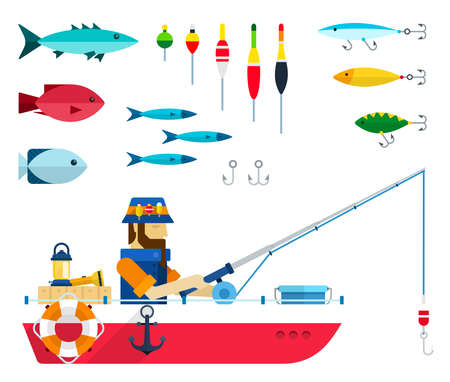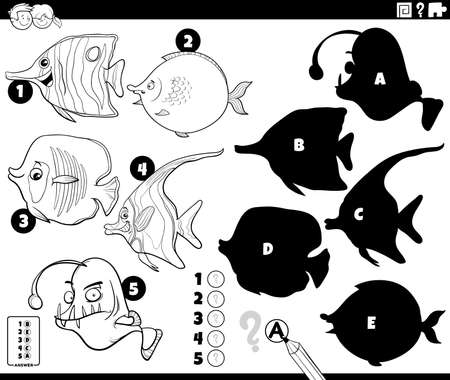1. Introduction to Moisture-Wicking Fabrics in Fishing Gear
When youre out fishing, especially for long hours under the sun or in unpredictable weather, staying dry and comfortable can make all the difference. Thats where moisture-wicking fabrics come into play. These materials are designed to pull sweat and moisture away from your skin and move it to the outer layer of the fabric, where it can evaporate quickly. This helps regulate your body temperature and keeps you feeling fresh throughout your trip.
Why It Matters for Anglers
Fishing often means dealing with a mix of sun, humidity, rain, and even sudden temperature changes. Whether youre fly fishing in the mountains or casting off a boat in the Gulf, wearing the right apparel can impact your performance and enjoyment. Moisture-wicking fabrics help prevent that sticky, damp feeling that comes from sweating under layers or getting splashed by water. They also reduce the risk of chafing and skin irritation, which is especially important during all-day excursions.
Benefits of Moisture-Wicking Fabrics for Fishing
| Feature | Benefit for Anglers |
|---|---|
| Sweat Management | Keeps skin dry by pulling moisture away |
| Quick Drying | Helps clothes dry faster after splashes or rain |
| Breathability | Improves air circulation to maintain comfort |
| Temperature Control | Aids in regulating body heat during hot or cool conditions |
| Comfort & Fit | Reduces stickiness and irritation from wet clothing |
Common Situations Where Wicking Fabrics Help
- Casting lines under the summer sun for hours at a time
- Trekking through humid marshlands to find the perfect spot
- Sitting still on a windy boat deck after being hit by sea spray
Choosing fishing apparel made with moisture-wicking technology isnt just about comfort—its about staying focused, agile, and protected while doing what you love. As we explore deeper into fishing gear performance, understanding this fabrics role is key to making smart choices when gearing up.
2. How Moisture-Wicking Technology Works
When youre out fishing under the hot sun or battling humid conditions, staying dry isnt just about comfort—its about performance and focus. That’s where moisture-wicking fabrics come into play. These high-tech materials are designed to pull sweat away from your skin and move it to the outer surface of the fabric, where it can evaporate more easily.
Understanding the Science Behind It
The science behind moisture-wicking starts with the fabric’s fibers. Most moisture-wicking garments are made from synthetic materials like polyester or nylon, which don’t absorb water like cotton does. Instead, these fabrics use capillary action to draw moisture through tiny channels in the fiber structure.
How Capillary Action Works
Capillary action is the movement of liquid through small spaces without the assistance of external forces like gravity. In moisture-wicking fabrics, this means that sweat is pulled off your skin and moved along microscopic grooves in the fibers until it reaches the surface of the material, where it can evaporate quickly.
Moisture-Wicking vs. Absorbent Fabrics
Here’s a simple comparison between traditional absorbent fabrics (like cotton) and moisture-wicking synthetics:
| Feature | Cotton (Absorbent) | Synthetic (Moisture-Wicking) |
|---|---|---|
| Water Absorption | High – holds onto moisture | Low – transfers moisture outward |
| Drying Time | Slow | Fast |
| Comfort When Wet | Heavy and clingy | Light and breathable |
| Best Use Case | Casual wear | Active sports like fishing |
Why This Matters for Anglers
If youre casting lines all day, dealing with splashes, or hiking to your favorite fishing hole, you need gear that keeps you cool and dry. Moisture-wicking apparel helps regulate your body temperature by reducing how much sweat stays on your skin. Less moisture means less chafing, reduced odor buildup, and an overall better experience during long hours outdoors.
The Bottom Line for Fishing Apparel Performance
The ability of a fabric to move sweat away from your body helps anglers stay focused on what really matters—landing the next big catch. With advances in textile technology, today’s fishing apparel not only looks good but performs when it counts most.

3. Benefits of Moisture-Wicking Apparel for Anglers
When youre out fishing under the hot sun or during long hours on the water, what you wear can make a big difference in your comfort and performance. Moisture-wicking fabrics are specially designed to pull sweat away from your skin and help it evaporate quickly. This simple but powerful feature offers several practical benefits that help anglers stay focused, comfortable, and in the game longer.
Temperature Regulation
One of the biggest advantages of moisture-wicking apparel is temperature control. When your body sweats, its trying to cool itself down. If that sweat stays trapped against your skin, it can actually make you feel hotter and uncomfortable. Moisture-wicking shirts and pants move sweat away so it can evaporate quickly, keeping your body cooler in warm weather and reducing the risk of overheating.
Chafe Reduction
Spending hours casting, reeling, or just moving around the boat can lead to friction between your skin and clothing. If youre wearing cotton or other non-breathable materials, that friction combined with moisture can cause painful chafing. Moisture-wicking fabrics reduce this risk by keeping skin dry and allowing clothing to glide more smoothly over your body.
Odor Control
Sweat by itself doesnt smell—its the bacteria that feed on sweat that cause odor. Many moisture-wicking garments are treated with antimicrobial technology to help prevent these bacteria from growing. That means less odor build-up during those all-day fishing trips, especially in hot and humid conditions.
How These Benefits Enhance Fishing Performance
Staying dry, cool, and comfortable doesnt just feel good—it helps you fish better. Heres a quick look at how these features support your time on the water:
| Feature | Benefit for Anglers |
|---|---|
| Temperature Regulation | Keeps you cool in the heat, helping maintain focus and energy levels |
| Chafe Reduction | Prevents irritation during long casting sessions or when moving around a lot |
| Odor Control | Keeps you feeling fresher during multi-hour or multi-day fishing trips |
Real-World Advantage on the Water
If youve ever fished for hours in a soaked cotton shirt, you know how distracting and draining it can be. Swapping to moisture-wicking gear means fewer distractions from discomfort and more time focusing on landing that next big catch. Whether youre fly fishing in the Rockies or bass fishing under the summer sun in Florida, staying dry and comfortable helps extend your endurance—and might even improve your chances of success.
4. Popular Moisture-Wicking Materials Used in Fishing Clothing
When it comes to fishing apparel, choosing the right fabric is just as important as picking the right bait. Moisture-wicking materials help keep anglers dry, cool, and comfortable during long hours on the water. Below, we’ll take a closer look at some of the most commonly used fabrics in fishing clothing and how they perform in different environments.
Polyester Blends
Polyester is one of the most popular moisture-wicking fabrics used in fishing gear. It’s lightweight, durable, quick-drying, and does an excellent job pulling sweat away from the body. When blended with other fibers like spandex or nylon, it becomes even more flexible and breathable—perfect for active anglers who need a full range of motion.
Best For:
- Warm and humid climates
- High-activity fishing like fly fishing or saltwater casting
- Layering under jackets or rain gear
Merino Wool
Don’t let the word “wool” fool you—merino wool is nothing like your grandma’s itchy sweater. This natural fiber is soft, breathable, and surprisingly effective at wicking moisture. Plus, it has natural odor-resistant properties, which is great for multi-day trips.
Best For:
- Cooler weather or early morning outings
- Long-duration fishing trips
- Layering under outer shells during winter angling
Specialized Synthetics (e.g., CoolMax®, Dry-Fit®, etc.)
Many top-tier fishing brands use proprietary synthetic materials designed specifically for performance. These high-tech fabrics often include UV protection, antimicrobial treatments, and enhanced breathability. They’re engineered to handle everything from blazing sun to sudden showers.
Best For:
- Tournament fishing or professional settings
- Hot and sunny conditions
- Quick drying after splash exposure or light rain
Comparison Table of Common Moisture-Wicking Fabrics
| Fabric Type | Moisture-Wicking Ability | Best Use Environment | Additional Benefits |
|---|---|---|---|
| Polyester Blends | High | Warm & Humid Conditions | Durable, Lightweight, Quick-Drying |
| Merino Wool | Moderate to High | Cool Weather / Multi-Day Trips | Naturally Odor-Resistant, Soft Texture |
| Specialized Synthetics | Very High | Diverse Conditions / Pro Use | UV Protection, Antimicrobial Features |
Selecting the right material depends largely on where you fish and how active you are on the water. Whether its chasing bass in the summer heat or ice fishing in chilly temperatures, having moisture-wicking clothing made from the right fabric can make all the difference in comfort and performance.
5. Choosing the Right Moisture-Wicking Gear for Your Fishing Style
When youre out on the water, your comfort can make or break your fishing experience. Moisture-wicking fabrics are key to staying dry and cool, but not all gear is created equal. Picking the right moisture-wicking apparel depends a lot on where you fish, what kind of fishing you do, and how you layer up throughout the year.
Tips Based on Regional Climate
The climate in your area plays a huge role in what kind of gear you should wear. Here’s a quick breakdown:
| Region | Climate Type | Recommended Gear Features |
|---|---|---|
| Southeast (e.g., Florida) | Hot & Humid | Lightweight, breathable shirts with high UPF rating and mesh panels |
| Pacific Northwest | Cool & Damp | Midweight long sleeves with water-resistant outer layers and moisture control base layers |
| Southwest (e.g., Arizona) | Hot & Dry | Ultra-light apparel with sun protection and fast-drying capabilities |
| Northeast & Midwest | Variable Seasons | Layered options including thermal base layers and breathable outer shells |
Selecting Gear by Fishing Type
The type of fishing you do also impacts your apparel needs. Heres what to consider:
| Fishing Type | Typical Conditions | Apparel Recommendations |
|---|---|---|
| Fly Fishing | Casting in rivers/streams, often hiking in/out | Moisture-wicking base layers under waders, long sleeve UV shirt, quick-dry pants |
| Offshore Fishing | Hot sun, wind exposure, saltwater spray | High-performance moisture-wicking shirts with UPF protection, neck gaiters, and waterproof outerwear |
| Freshwater Boat Fishing | Mild exposure, less movement | Comfortable wicking t-shirts or polos with layered fleece or windbreaker if needed |
Dressing for Year-Round Comfort: The Layering Strategy
Base Layer (Next-to-Skin)
This is your first line of defense against sweat buildup. Look for lightweight, snug-fitting tops made from polyester or nylon blends that pull moisture away from the skin.
Mid Layer (Insulation)
If youre fishing in cooler weather, add a mid layer like a fleece pullover or softshell jacket. Make sure it still allows moisture to escape while keeping you warm.
Outer Layer (Protection)
Your shell layer protects against wind, rain, and UV rays. Choose breathable waterproof jackets or windbreakers that work well over your base and mid layers.
A Quick Layering Guide by Season
| Season | Suggested Layers |
|---|---|
| Spring/Fall | Moisture-wicking base + light fleece mid + windproof outer layer as needed |
| Summer | Lightweight moisture-wicking shirt + optional UV-protective outerwear like a buff or hat with shade flap |
| Winter | Thermal moisture-wicking base + insulated mid layer + waterproof/windproof shell jacket and pants |
No matter where or how you fish, choosing the right moisture-wicking clothing will help keep you comfortable, dry, and focused on catching more fish.


